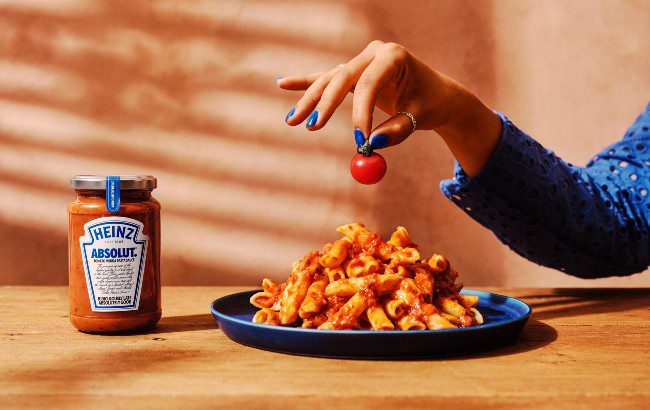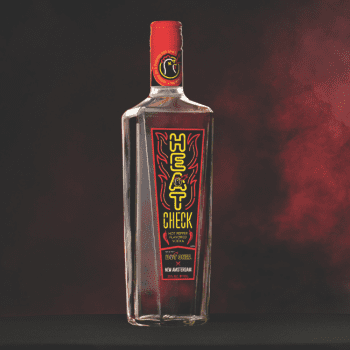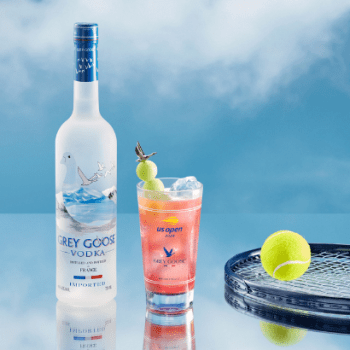Market forces: vodka’s new lease of life
Putting the claims of stagnation to one side, we look at how vodka brands are harnessing the power of marketing to reinvigorate the category.

Vodka – as a neutral spirit – has to work a little harder these days to ensure it’s still the life of the party. Make no mistake, it’s still one of the world’s biggest spirits categories, and remains the leading spirit in sales and volume in the US, according to data from the Distilled Spirits Council of the US. Research and Markets even predicted that the global vodka market could be worth US$40.25 billion by 2030. People are still drinking lots of it, but perhaps they are not talking about it as much as they once did. So, we’ve asked a few brands, big and small, how they are implementing modern marketing techniques to redirect the conversation back towards vodka.
“I’m unfortunately old enough to remember 15 or so years ago, when vodka was the category that everyone was talking about,” half jokes Brandon Lieb, vice-president of Spirit of Gallo, which produces New Amsterdam Vodka. “Other categories have stolen the spotlight to a certain extent, but vodka continues to be the driver. It’s 26% of the category here in the US. It’s not like people have moved away. It’s just that a lot of the attention has shifted to other categories, and bringing that energy back to vodka really comes down to your approach.”
New Amsterdam has sponsorship deals in sport, with the likes of the Ultimate Fighting Championship (UFC) and National Hockey League, as well as recently releasing a hot-pepper-flavoured vodka named Heat Check with YouTube series Hot Ones, which also taps into the spicy cocktail trend. These partnerships, Lieb explains, “come from an understanding of who our consumer base is and what is most important to them. You’ve got to find different and interesting ways to interweave your brand into the lives of your consumers.

“The insight we found when we were doing our research is there’s this need for competition and winning in life, whether it’s big or small – and that was a nugget of information that’s led us down a path of where we position our brand.”
Taking Hot Ones, for example, a talk show in which celebrity guests are interviewed while eating chicken wings that get progressively spicier, Lieb says: “The show has a very strong following, so their fan base very much aligns with ours. If you look at what the show is all about, it’s trying to get their way through wings in a light-hearted, fun, entertaining way. These are all things that our consumers are passionate about. And so we look to find those types of partnerships, to leverage and interweave our brand into things that our consumers are excited about.”
Lieb also believes that consistency is key in maintaining success for the brand’s marketing approach.
He adds: “Look at all the channels where people are consuming things, right, events, social media, television and so on so forth. If you are seeing us at UFC, we look and feel the same way as when you see us walking into a liquor store, as to when you see us on Instagram, and that’s been a key driver of making sure that our brand is consistent across the board.”
Carving a niche
“Being completely new to the category, we’ve got the licence to come in and do it very differently – which is fun and we can hopefully make it a little more relevant for how people see and view as vodka these days”, says Ross Haddow, chief marketing officer at Ellers Farm Distillery in North Yorkshire, which makes Dutch Barn Orchard Vodka.
Vodka’s large scale comes with advantages, especially for newer brands looking to carve out their own niche and not have to immediately go toe to toe with heavyweights. Dutch Barn is co-owned by comedian Ricky Gervais, who invested in Ellers Farm Distillery last year. With Gervais incredibly hands-on in the marketing effort, the brand is in a strong position to build awareness through the comedian’s reach and bold humour – seen on social media through various stunts like letting a German shepherd do the talking (or barking) to sell the product, as having a dog in an advert supposedly generates more interest.
“I know it can be a bit clichéd, and everyone says it, but we want to be fresh in terms of how we do it,” Haddow says. Within the first couple of months, the pull of Gervais’ involvement has seen the brand rise to 11% national awareness.
Haddow makes it clear, though, that it’s not just about the awareness that Gervais’ involvement has created. He says: “It’s the way it’s been executed and done, and the message that it’s delivering.”

The brand’s campaign message is ‘positively different’, and the vodka is made in North Yorkshire with 100% British apples. In Haddow’s words, it’s “challenging the norm”. Expanding on this, he says: “There hasn’t been anyone yet (as far as I know) who has been able to champion quality and do it in quite a fun, more down-to-earth space. That’s where we see the opportunity, and particularly with someone like Ricky. We want to appeal to people who appreciate good value and it’s not just about quality, which is perceived luxury. It’s about quality that I like paying for.”
Haddow has previously worked with Diageo and Beam Suntory (now Suntory Global Spirits). Bearing in mind his past experiences, he notes: “Our belief is that the spirits category can tend to be quite safe. It can tend to be homogenised in some places. And there are a few brands that choose to be, or can be, in a place to be bold and different, but do it at scale. And that is where our benefit and where our weight is, that with some like Ricky, he allows us to do it at scale.”
On the other end of the scale, you have Absolut – the world’s second best-selling vodka brand. The Swedish brand, owned by Pernod Ricard, is one of the pioneers of collaborative marketing in vodka, a model it uses to keep connected with its ever-evolving consumer base.
Deb Dasgupta, vice-president of global marketing at Absolut, says for brands that have been around for more than four- and-a-half decades (ie Absolut in the States) it is “important to reinvent and have that freshness”.
Need to evolve
Absolut’s core audience is younger consumers, so to stay relevant in culture it needs to evolve, to bring in those who have not grown up with the brand. Partnerships with major festivals such as Belgium’s Tomorrowland and Coachella in the US have helped in this regard, dropping it right in the thick of where its target market is.
“It’s not just about the drink, it’s about the whole experience,” Dasgupta says. “That’s basically where we are, and it all stems from our brand philosophy of ‘born to mix’ – which is about not just mixing drinks, but mixing people, perspectives, ideas and identities. We don’t want to push just the drink – we want the consumers to celebrate, interact and, you know, experience the brand in more ways than one.” Beyond events, other strategies Absolut employs to contemporise its voice include its collaborations with musicians, photographers and artists, such as pop icon Andy Warhol. A limited edition bottle illustrated with one of Warhol’s lost paintings was recently released to much fanfare. Art, Dasgupta says, has “always served as a very potent medium for Absolut because it has the ability to evoke emotion, spark conversations and challenge conventions.
“It has always been the canvas for creativity right from when the brand was launched in 1979 in the US. If you are really trying to be a force for good, you can’t do it alone. You want to collaborate with artists or other partners to be able to bring about a change. This is what makes Absolut Absolut.”

Back by popular demand
Other new activities from the brand this year have seen the Absolut x Heinz vodka pasta sauce return by popular demand after much noise on social media, while a honey-flavoured vodka was launched in the UK to meet innovation trends. “We need to ensure we are picking up on moments in culture and making them big,” Dasgupta adds. “Yes, we champion a spirit of inclusivity and diversity, but we want to reimagine it from a future perspective. We’ve found new ways to bring that to life because as context, time and the audience changes, the brand needs to ensure that it is modernising to truly reflect the times that we are in.”
Meanwhile, Grey Goose, associated with luxury, has “evolved significantly” in the way it reaches consumers, says Krystina Robinson, global brand director.
“While our product has remained true to the original vision our founders had when they set out to create the best French vodka, we focus on ensuring our brand’s adverts convey thoughtful narratives, whether it’s our Vive le Martini spot, which has successfully resonated in markets worldwide, or the experiences we create, such as our 18-year partnership with the US Open, where the Grey Goose Honey Deuce [its signature cocktail] has become the hottest accessory of the tournament”.
Leaning into its reputation as a status symbol, the brand released Altius in April – a prestige vodka crafted through high-altitude glacial filtration using Alpine spring water and French winter wheat. It has presented it in destinations such as Ibiza, enlisting actor Idris Elba to promote it in the process.
Robinson says: “We are highly selective about our brand associations and presence, whether it’s on the red carpet at the Grammys, in the Grey Goose suite at the US Open, or in Ibiza, we constantly ensure we don’t compromise, and focus on how we can add value in any moment.”
Joyful moments
At this year’s US Open, Grey Goose chose American tennis player Frances Tiafoe to front its campaign. Robinson adds: “His influence, along with the growing popularity of tennis, aligns perfectly with our brand’s focus on celebrating stylish, joyful moments.”
All in all, despite competition from other spirits, “vodka will always be there”, asserts Dasgupta. Tequila might be having its time, and rum might be on the rise, but consumers always come back to vodka. “From Espresso Martinis to Cosmopolitans, six out of 10 top cocktails are vodka-based”, she continues. “Every category is cyclical and vodka as a category will always stay relevant.” It just needs a bit of modern thinking for this to happen.”
How are you adapting your marketing approach to attract younger vodka drinkers?
Ali Pickering – chief marketing officer, Drinksology Kirker Greer
“Considered a ‘new breed’ of vodka, Ukiyo Japanese Rice Vodka is playing a key role in challenging traditional norms and expanding choice for younger drinkers by contributing to a narrative that goes beyond traditional perceptions. Alternative ingredients like rice, alongside innovative and yet subtle flavour expressions, are opening new opportunities to engage with those interested in cultural exploration. As such, we’ve set out to evoke the senses with the unique tastes, flavours, and textures of Japan in our product and packaging.”
Tarquin Leadbetter – founder and master distiller, Southwestern Distillery
“Connie Glaze Vodka is a natural fit for Gen-Z and Millennial drinkers. We’re an eco-conscious giving brand, donating 1% of our sales to beach clean-up charities. We have launched lower-ABV vodka liqueurs including the delicious Toffee and Lemon Sherbet, celebrating the modern trends of drinking less but better. “And we’re super proud of our beautiful, coastal-inspired bottle that really stands out on shelves and makes a powerful digital impact on social media.”
Related news
Jo Malone CBE creates vodka range
